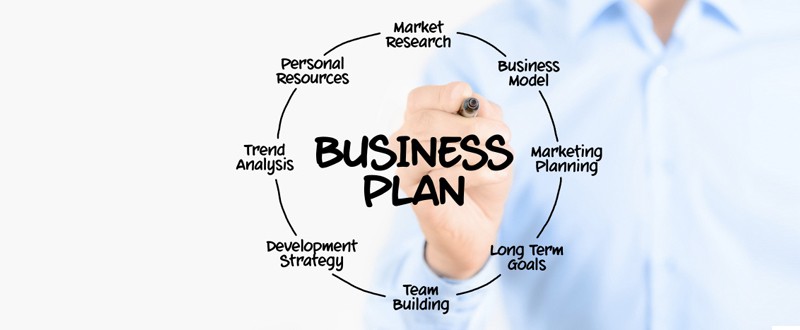Almost every business will access borrowed capital at some point throughout their lives. No matter what stage your company is at, external funding provides the liquidity you will need to pay your bills, secure new suppliers and market your goods and services to new customers. As you set out to secure funding, whether it is from a bank or a non-bank (alternative) lender, you will encounter two main types of products – asset-based or cash flow loans.
Asset-based loans allow you to access funds by borrowing against the various assets you already hold on your balance sheet. Cash flow loans provide funding based on your estimated future revenue and income. Both have their advantages and downsides. You may benefit from one more than the other, or choose to use a combination of both to fund your business. To help you decide what is best, we will discuss the differences and who each type of lending is better suited for.
What is cash flow lending?
Lenders will provide cash flow-based funding based on their assessment of your future sales potential. They will look at your past sales history and cash flow to support their analysis. Since these loans do not usually require any physical assets as collateral to fall back on other than the business’ debtors ledger, your credit rating is also part of the risk equation. To consider your application for a cash flow loan, lenders will assess your personal credit history, the business’s credit score as well as the frequency and reliability of deposits into your bank account (cash flow).
Banks offering cash flow loans will typically account for risk by assessing your credit capacity. Usually, they will use EBITDA (or similar) to do this. After applying a ‘credit multiplier,’ they will establish a good idea of how much credit your business can safely carry. Banks do this to account for different types of industries as well as the variable risks associated with each.
Non-bank lenders are often willing to take on more risk, meaning it is usually easier to secure funding. They are more concerned with the frequency of deposits into your business account to ensure you have the cash flow to meet your repayments. Loans are generally fixed term and due over equal instalments whether that be weekly or monthly in nature.
For who is cash flow lending best suited?
A cash flow-based loan might be right for your business if you have good GP margins and sell your products and services on credit (ie you wait 30-60+ days for your customers to pay your invoices). Cash flow loans are commonly used by companies in the marketing, software, wholesale, manufacturing and e-commerce industries.
“Cash flow loans usually carry a higher interest rate than asset-based financing”
It is also important to realise that cash flow loans usually carry a much higher interest rate than asset-based financing. There is a much higher risk associated with lending that isn’t backed by a physical asset. If your business has a bad month and is unable to make a payment, there is nothing for the lender to fall back on. If assets are provided as collateral, they can be sold or otherwise used to recoup the lender’s funds. Carefully consider if cash flow lending is right for your circumstances.
What is asset-based lending?
Unlike cash flow lending, asset-based loans always use the applicant business’s assets as collateral. The lender predetermines the value of the assets used to back the loan which will commonly include real estate, accounts receivable, equipment, machinery, vehicles or inventory.
“Your accounts receivable line may allow you to borrow up to 90% of its face value”
The amount you can borrow against these assets depends on a range of factors, including your credit rating and the quality of your customer base. For example, an accounts receivables ledger with amounts spread across several debtors may allow you to borrow up to 90% of the face value of the outstanding invoices, as a line of credit or invoice finance facility. If you were to offer equipment or a vehicle as collateral, the amount you can borrow would typically be lower. Why? If you default on the loan, the recoverable value of these assets at that time would almost always be lower than what they are worth today. Depending on the loan product, you should be able to use a range of assets as collateral to support your funding base.
Who would use asset-based lending?
For example, your business may be approved for $150,000 an asset-based loan based on 75% of the value of the asset/s (machinery and vehicles). This could be combined with a cash flow facility of $250,000 against your accounts receivables balance. Under this model, you have access to more funds, as well as a variable portion (receivables) that increases as your sales increase and you invoice more.
Invoice finance is an increasingly common funding solution for growing businesses. It is low touch; approvals are quick; and the more one sells (ie invoices) the more funding the business can access. Don’t let a lack of cash flow hold your business back. Use your accounts receivables ledger (unpaid invoices) unlock tomorrow’s cash today with OptiPay.
Who is OptiPay?
OptiPay, one of Australia’s leading business finance providers, has been dedicated to helping small business owners solve cash flow challenges for over a decade and has provided $1.5 billion in business funding to more than 500 Australian businesses. OptiPay specialises in modern financing solutions such as invoice factoring, invoice finance, debtor finance, and lines of credit. OptiPay’s mission is to support business growth providing liquidity in as little as 24 hours, ensuring they have access to tomorrow’s cash flow today. This rapid access to funds helps businesses maintain smooth operations and seize growth opportunities without the stress of cash flow constraints. At OptiPay, we believe that healthy cash flow is the lifeblood of any successful business. Our commitment to helping businesses overcome financial hurdles and achieve their growth ambitions has solidified our reputation as a trusted partner in the business finance sector. Whether you are looking to stabilise your cash flow, expand your operations, or navigate financial challenges, OptiPay is here to support your journey with innovative and efficient financing solutions.



